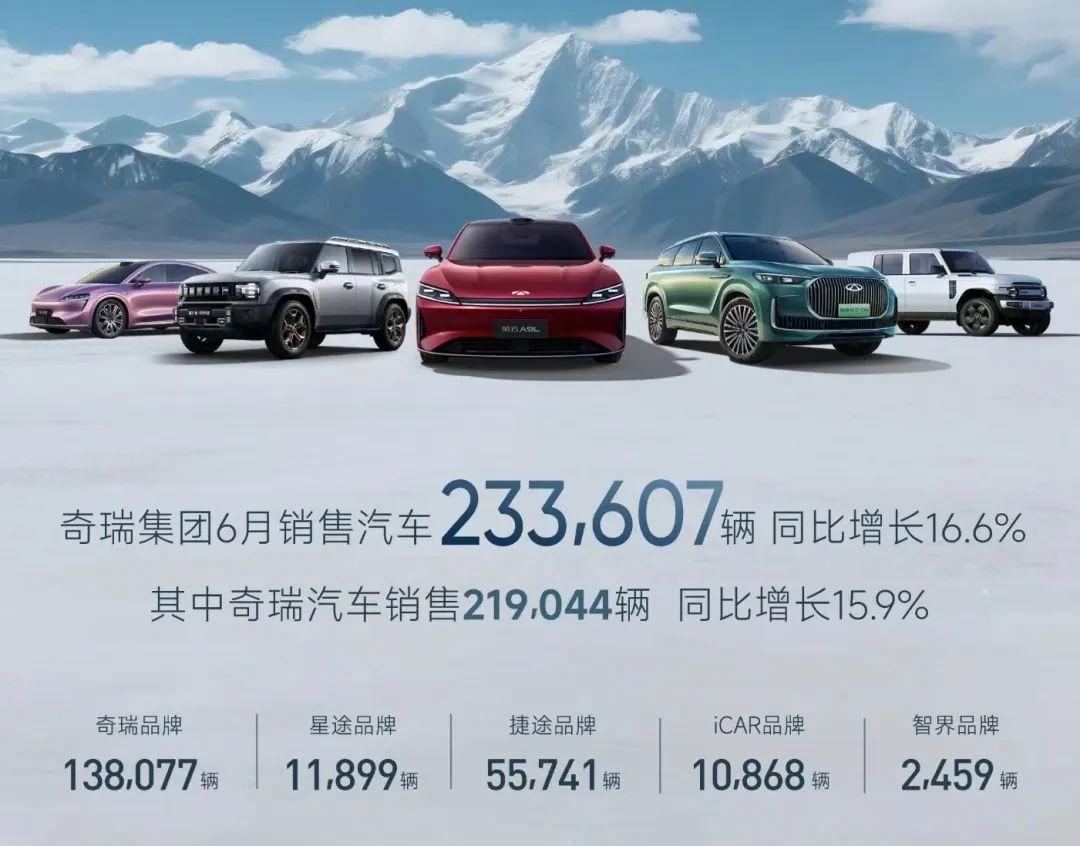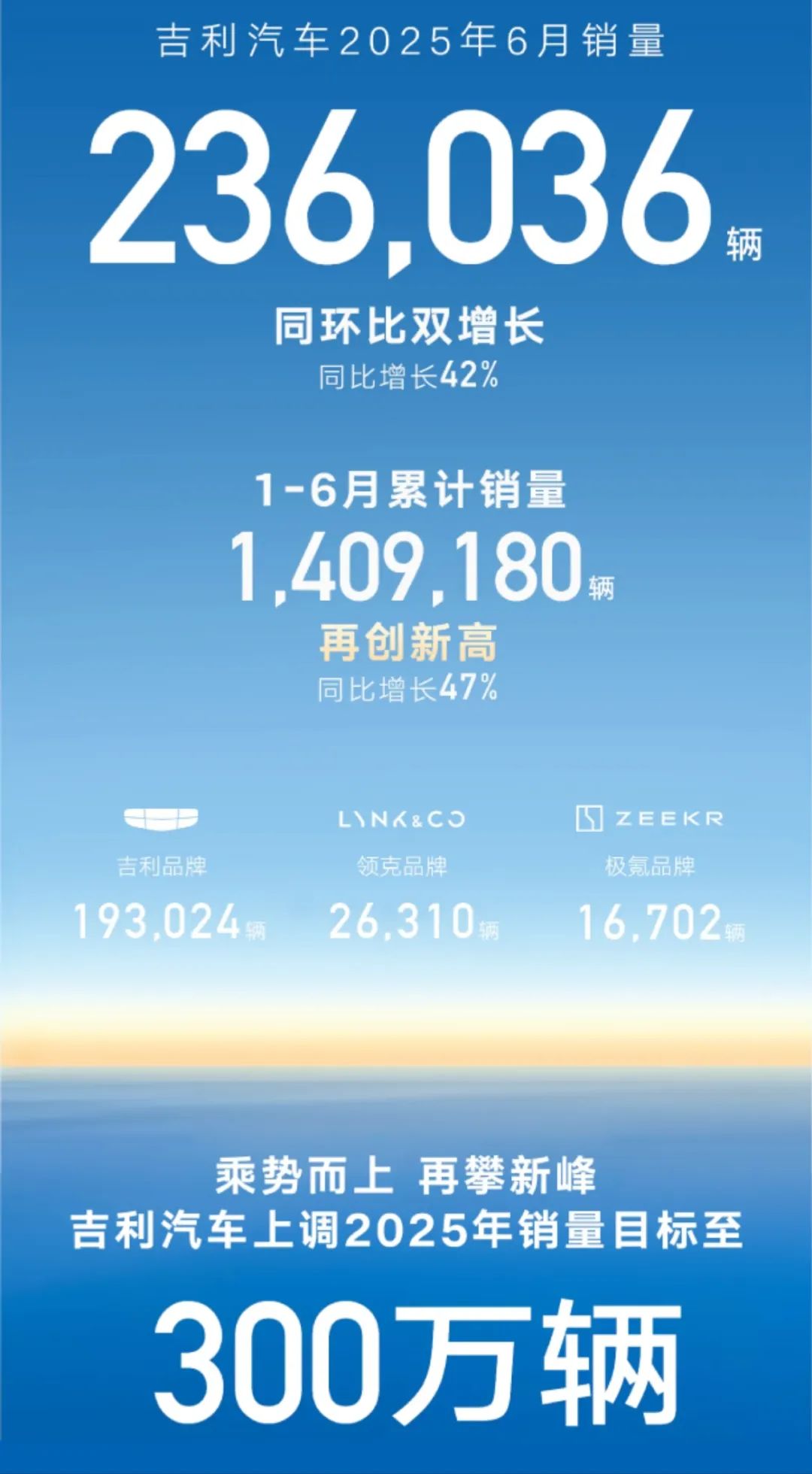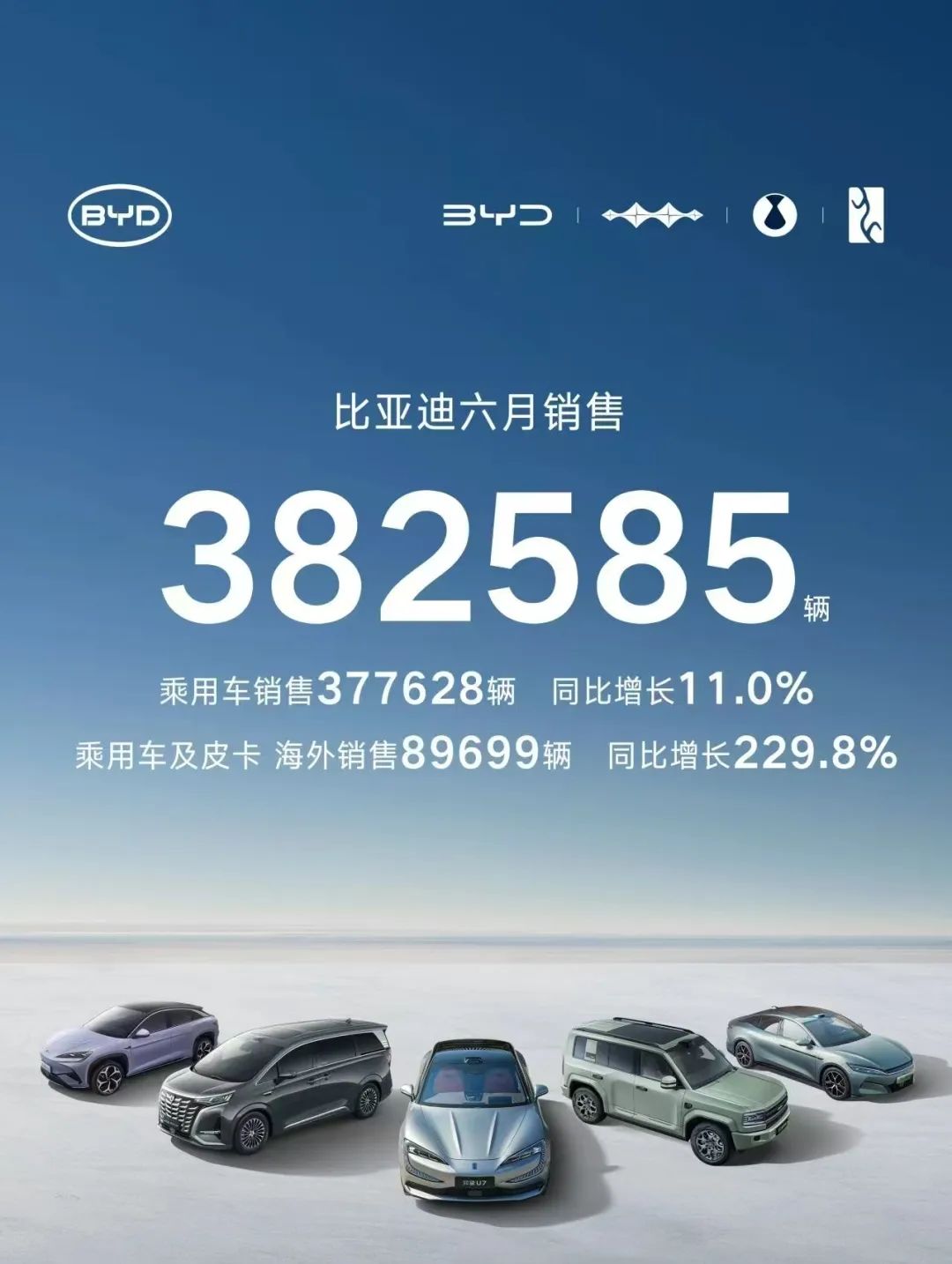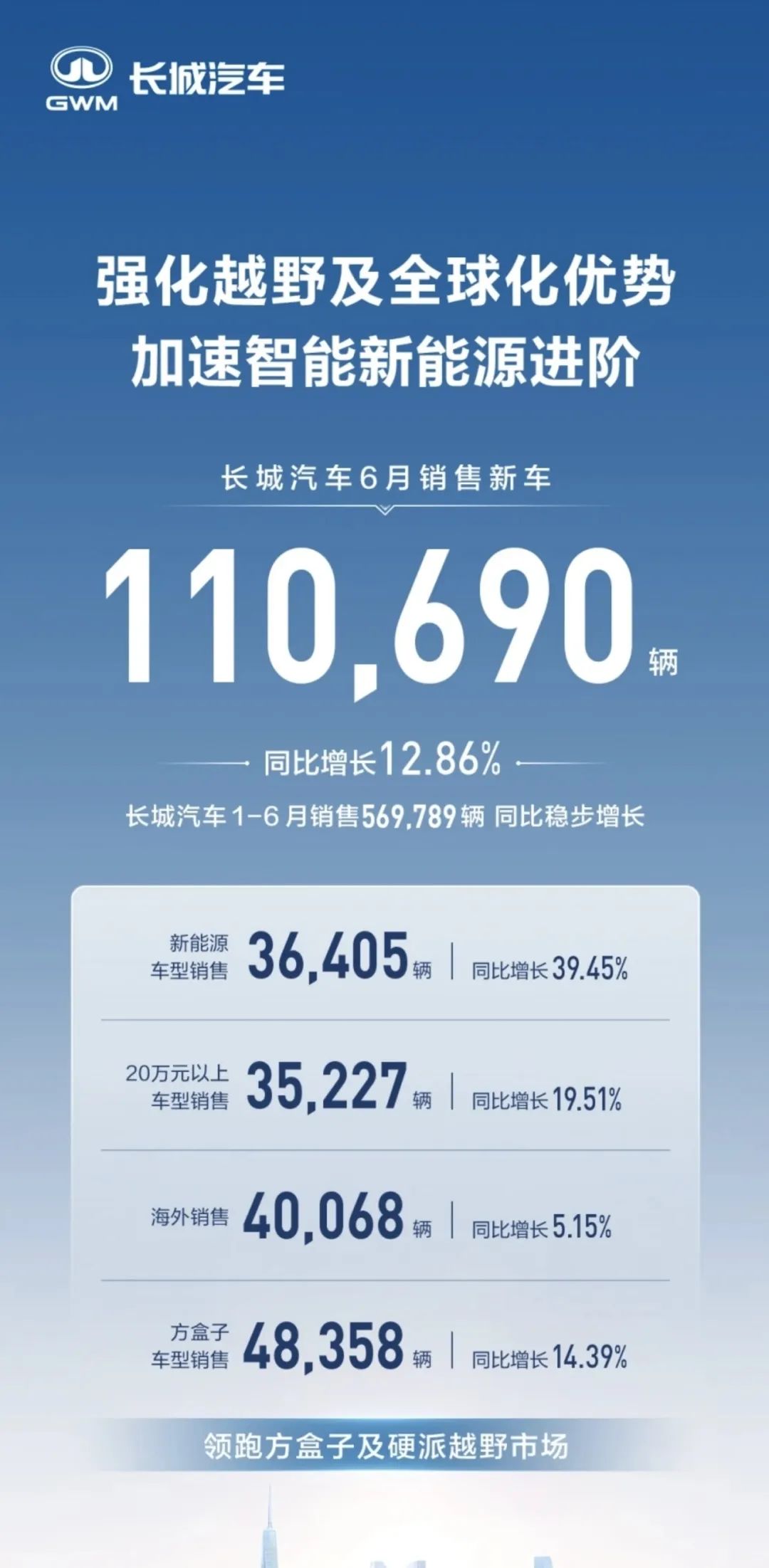2025 First Half "Top 5 Autonomous" Review | Jia Xinguang Auto Commentary
![]() 07/07 2025
07/07 2025
![]() 417
417
Editor's Note:
Time has flown by, and we are already halfway through 2025. From January to June, the domestic auto market exhibited a trend of "fierce internal competition." Amidst the industry's in-depth transformation and the concentrated outbreak of structural contradictions, a strong sense of competition even permeated some auto companies. This was not only a manifestation of white-hot market competition but also a reflection of the reconstruction of technological routes, production capacity layouts, and business models.
In the first half of this year, all auto companies endeavored to achieve breakthroughs in sales and market share through new energy transformation, product matrix optimization, and global layout. How have the "Top 5 Autonomous" companies, which support "half of China's auto market," fared? As each company announces their half-year sales figures, let's take a closer look.
Sprinting Chery:
Achieving Four Breakthroughs in "Sales, Exports, New Energy, and Technology"
Many refer to Chery as the "ground-sweeping monk" of China's auto industry. For a long time, it was inconspicuous yet sold many cars.
At the 2023 Chery Technology DAY, Yin Tongyue, Secretary of the Party Committee and Chairman of Chery Holding Group, laid down a "tough statement": "Chery will no longer be as polite as before in the new energy field next year. We will enter the top positions of the new energy vehicle rankings and achieve latecomers catching up."
More than a year later, Chery delivered on its promise. In the first half of 2025, Chery achieved four breakthroughs in "sales, exports, new energy, and technology."

The first breakthrough was record sales for the same period in history, with the group selling 1,260,124 vehicles in six months, a year-on-year increase of 14.5%. It achieved sales of over one million vehicles in the fastest historical time of five months. By the end of June, Chery Group had accumulated over 16.98 million global users.
The second breakthrough was a new high in exports for Chinese brands, with 550,270 vehicles exported in the first half of the year, a year-on-year increase of 3.3%. Products covered 120 countries and regions worldwide, and Chery remained the top exporter among Chinese auto companies; according to statistics, one out of every five Chinese cars that go abroad is "made by Chery." The group's cumulative exports of vehicles exceeded 5 million.
The third breakthrough was that the growth rate of new energy vehicles ranked at the forefront of the industry. Among the new products launched by Chery Group in the first half of the year, new energy models accounted for 83%. With the rapid launch of models such as Fengyun A9L, Fengyun T8, Xingjiyuan ET, Shanhai T1, iCAR V23, and Zhijie R7, Chery sold 359,000 new energy vehicles in the first half of the year, a year-on-year increase of 98.6%, with both scale and growth rate ranking at the forefront of the industry.
The fourth breakthrough was in technological innovation and transformation. Through the "Smart Night," "Hybrid Night," and "Safety Night," Chery showcased a series of "black technologies" such as the world's leading 48% thermal efficiency hybrid engine, 30,000rpm ultra-high-speed motor, and Mojia robot, driving the transformation and upgrading of products.
In this era where "even good things may go unnoticed," Chery's "impoliteness" has allowed more people to rediscover and understand the brand.
Rushing Geely:
A 47% surge in the first half, with ZEEKR still having significant room for growth
On July 1, Geely Auto announced the latest sales data: cumulative sales in the first half of the year reached 1.409 million vehicles, a year-on-year increase of 47%, surpassing the half-year target. Subsequently, Geely announced that it would increase its original annual sales target by about 11%, from 2.71 million to 3 million vehicles.

Behind this strong performance is Geely's effort in the new energy field. Data shows that Geely Auto's new energy vehicles (including Geely, Lynk & Co, and ZEEKR) were the core growth engines for the sales explosion, with sales reaching 725,200 vehicles in the first half of the year, a surge of 126% year-on-year. It's worth noting that in the third quarter of last year, Geely's new energy vehicles just began to turn a profit. Through its efforts in new energy in the second half of last year and the first half of this year, Geely has completed the transformation of new energy vehicles in stages.
However, despite the excellent performance, the ZEEKR brand still has significant room for improvement. Data shows that ZEEKR delivered 16,702 new vehicles in June, a year-on-year decrease of 17%; sales in the first half of 2025 reached 90,740 vehicles, a year-on-year increase of 3.26% compared to 87,870 vehicles in the first half of 2024. Based on the annual target of 320,000 vehicles, only 27.46% was completed in the first half, with actual sales falling short of the target.
As the pacesetter for Geely's transformation into high-end luxury new energy vehicles, ZEEKR was once placed with high hopes, and Geely invested heavily in it. From the ZEEKR official website, we can see that ZEEKR has 7 major vehicle lines and 10 models (ZEEKR 9X has not yet been launched). However, the current monthly average of about 15,000 vehicles is unsatisfactory.
In February this year, ZEEKR and Lynk & Co brands merged strategically into ZEEKR Technology Group; in May this year, there was a major adjustment in ZEEKR management, with Lin Jie, Vice President of ZEEKR Technology Group and General Manager of Lynk & Co Sales Company, taking charge of the overall domestic marketing work of the ZEEKR brand, directly managing the brand marketing center, user growth center, and user delivery center. Under a series of bold reforms, we will continue to pay attention to whether ZEEKR can make a good turnaround in the second half of the year.
Steadily Advancing BYD:
Sales exceeded 2.15 million in the first half, with overseas sales exceeding 470,000
On July 1, BYD announced the latest sales data, with sales in June reaching 382,585 vehicles, a year-on-year increase of 12%, basically the same as the previous month; cumulative sales in January to June exceeded 2.14 million vehicles, a year-on-year increase of 33.0%. Additionally, BYD's overseas sales in the first half of the year reached 472,000 vehicles, a year-on-year increase of 132%, already exceeding the total overseas sales for the whole of last year (433,000 vehicles).

In the first half of this year, despite being pursued and blocked by many competitors, BYD maintained an absolute leading position. With fierce competition in the domestic market, BYD is continuously increasing its investment in the international market, which is the key to maintaining its leadership for a long time to come.
Nowadays, BYD has established four overseas factories in Thailand, Uzbekistan, Brazil, and Hungary. On July 1, BYD's passenger vehicle factory in Camacari, Bahia, Brazil, witnessed the offline of the first vehicle. It only took 15 months from breaking ground to the first vehicle coming off the line. The new energy vehicle production line at this base will produce pure electric and plug-in hybrid models with a planned capacity of 150,000 vehicles. The completion of BYD's Brazil passenger vehicle factory has important strategic significance as it will become a strategic fulcrum for BYD to leverage the entire Latin American new energy market.
To date, BYD's new energy footprint has covered six continents and more than 110 countries and regions worldwide. Overseas sales for the whole of 2025 are expected to exceed 800,000 vehicles. The overseas market has become an important engine for BYD's sales and revenue growth.
Striving Changan:
Sales hit an eight-year high, with new energy blooming in multiple spots
Looking at Changan Auto's 2025 first-half results: cumulative sales reached 1.355 million vehicles in six months, an eight-year high. Among them, new energy sales reached 450,000 vehicles, a year-on-year increase of 48.8%. Its three major new energy brands, Changan Qiyuan, Deep Blue Auto, and AVATR, are gaining momentum, with best-selling models such as Qiyuan Q07, Deep Blue S09, and AVATR 06 showing strong momentum, and intelligent innovative technologies gradually releasing their potential.

At the Changan Auto Global Partner Conference at the end of last year, Changan Auto announced its 2025 "3311" annual target, namely, to achieve total sales of 3 million vehicles, revenue of 300 billion yuan, new energy sales of 1 million vehicles, and overseas sales of 1 million vehicles.
Based on the sales completed in the first half of the year, the total sales target of 3 million vehicles and the new energy sales target of 1 million vehicles will likely be achieved, but the overseas sales target of 1 million vehicles poses a significant challenge to Changan Auto. Changan Auto announced that overseas sales in January to June 2025 were 299,400 vehicles, leaving a large gap to reach 1 million vehicles.
Calm Great Wall:
Sales of nearly 560,000 vehicles in the first half, with a series of actions planned for the second half
On July 1, Great Wall Motor celebrated its 35th birthday. In a video clip released by Wei Jianjun, Chairman of Great Wall Motor, on that day, he once again mentioned the video that went viral five years ago, "Can Great Wall Survive Next Year?" Five years ago, Great Wall Motor was at its peak, with Haval H6 still atop the sales pyramid. However, Wei Jianjun chose reflection over celebration. In the past five years, China's auto market has undergone tremendous changes, but Great Wall has continued to advance at its own pace amidst questions and doubts.

Data shows that from January to June, Great Wall Motor sold a total of 559,669 vehicles, a year-on-year increase of 7.79%. Among them, sales of new energy models reached 132,374 vehicles, a year-on-year increase of 41.99%; overseas sales reached 201,500 vehicles, a year-on-year increase of 62.59%.
Although its sales are somewhat "unimpressive" compared to brands like BYD and Geely, Great Wall Motor is one of the most profitable auto companies in the Chinese market. Even with the current price war in the auto market, Great Wall Motor's revenue and profits are still considerable. According to data disclosed by Great Wall, in 2024, the average revenue per vehicle of Great Wall Motor was 163,800 yuan, an increase of 23,000 yuan year-on-year; and the average net profit per vehicle was 10,300 yuan, an increase of 4,600 yuan year-on-year. In the current auto industry, where "revenue increases but profits do not," Great Wall's report card is indeed eye-catching.
In the fiercely competitive domestic auto market, Great Wall appears exceptionally calm. On June 18, at the 2024 Annual General Meeting of Great Wall Motor, Wei Jianjun said that for the next five years, the fulcrum of Great Wall Motor will still be long-termism. Led by the ONE GWM brand strategy, it will promote brand upgrading and pursue market share with quality.
It is understood that Great Wall Motor will hold multiple events in July to showcase its series of plans for the next five years to the outside world, including technological routes, market routes, company development routes, and strategies. Great Wall Motor's new platform will also be unveiled. The future of Great Wall Motor is worth looking forward to.
Summary:
Mr. Jia Xinguang believes: In the first half of the year, the production and sales situation of Chinese auto companies showed a clear differentiation, with some companies performing exceptionally well while others faced challenges. Competition in the new energy vehicle market intensified.
Today, the auto industry is undergoing unprecedented changes, with fierce market competition and continuously compressed profit margins. Survival is no longer just a saying. In May this year, relevant officials from the Ministry of Industry and Information Technology stated that they would intensify the rectification of the "inward-scrolling" competition in the auto industry and promote the optimization and adjustment of the industrial structure.
Against this backdrop, the focus of market competition will return to technological competition. Autonomous brands such as Chery, Geely, BYD, Changan, and Great Wall have showcased the vigorous development vitality of China's auto market. We have reason to believe that the future of China's auto industry will be better and better.







